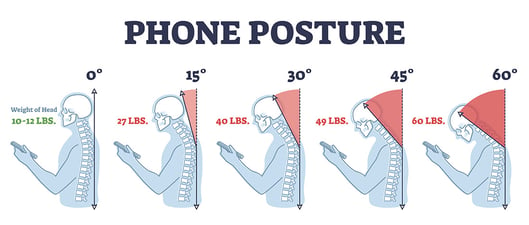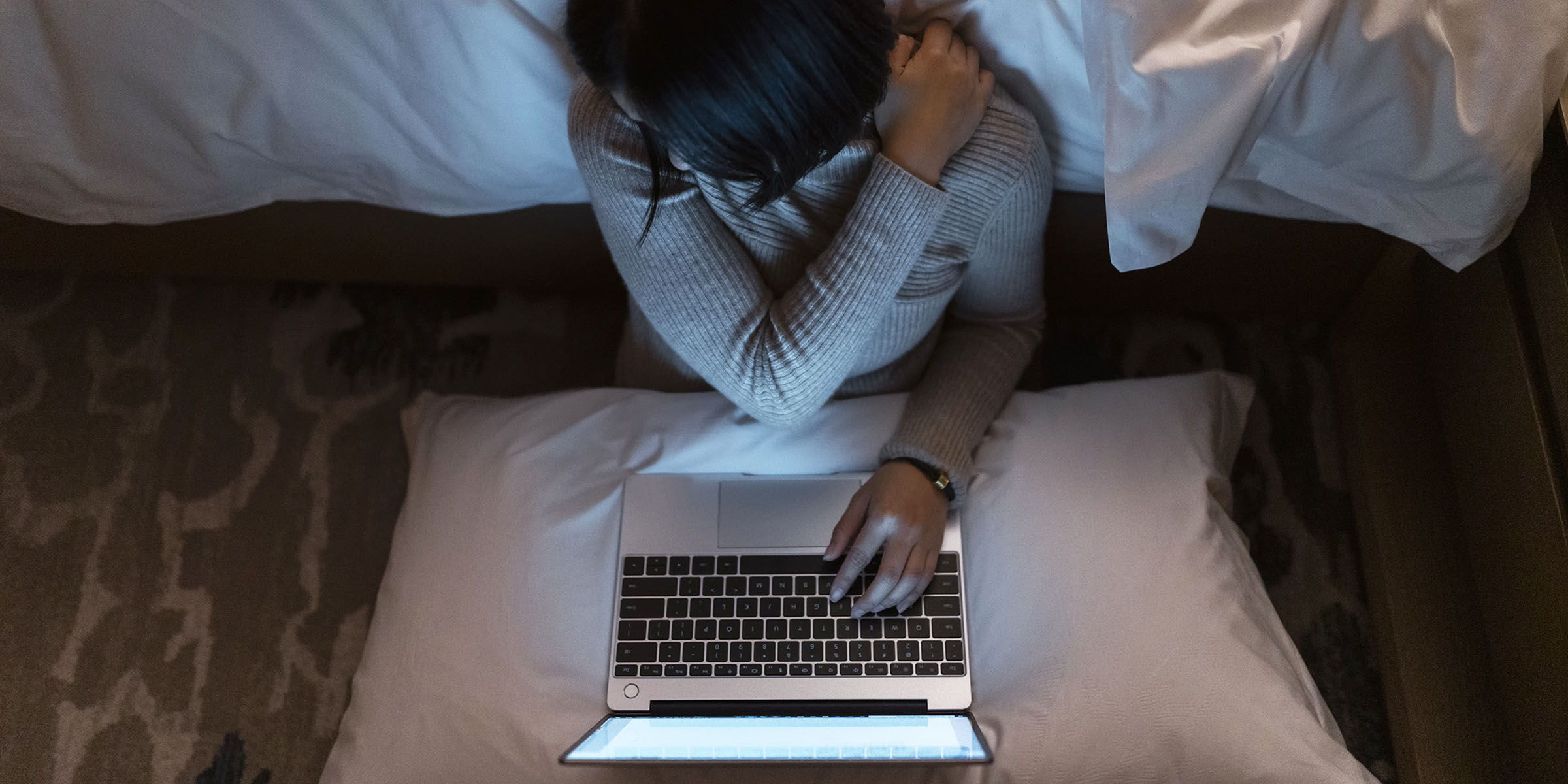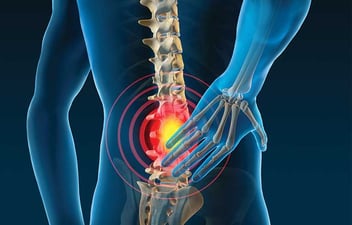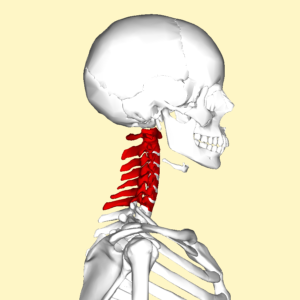If you've ever spent hour after hour, day after day staring at your computer screen, you're certainly familiar with the discomfort known as "tech neck." It's a word that's come to describe to the soreness, stiffness, and even injury that can arise from leaning your head downward for an extended period of time to gaze at an electronic device.
Ownership of smartphones, tablets, and e-readers has skyrocketed in recent years, ushering in major changes to the ways we live and work. But however much you may love your iPhone, Android or iPad, it could be putting serious strain on your neck and back without you even knowing it.

Why Is 'Tech Neck' Bad for Your Health?
"Tech neck" can cause headaches, neck pain, shoulder pain, upper back pain, tingling or numbness in your hands, and even a loss of the spine's natural curve. The degree of the symptoms varies from person to person, although they tend to be more noticeable in conjunction with greater cell phone or other gadget activity.
"Tech neck" can potentially cause posture issues. He notes that spending hours on your phone or straining your neck forward at work can induce lengthening of neck muscles and shortening of chest muscles, "which may lead to an increase in spinal pressure in your neck."
Maintain good posture throughout the day and strive to restore it as soon as you notice yourself drifting into awkward positions.
iPain
This “iPain,” as it has come to be known, all comes down to posture. When you spend prolonged periods of time looking down at a phone or tablet, your cervical vertebrae (the stack of small spinal bones in your neck) and neck muscles are forced too far forward, and have to support the weight of your head.

This can cause strain or injury to your muscles, nerves, tendons, ligaments and spinal disks. Numerous studies in the last few years have shown a strong correlation between mobile device use and increased incidence of neck aches, numbness, shoulder tension, and tension headaches.
Symptoms of Tech Neck
The most obvious sign that your neck is out of place is pain. People in their forties and fifties may notice a curvature or bending of their spine at the base of their neck, which she describes as a sure sign of chronic misalignment.
Other signs of "tech neck," include:
- Headaches
- Back pain in the upper back
- TMJ disorders are caused by discomfort or dysfunction in the jaw joints and muscles.
- Numbness or tingling in the hands.
- Hand sluggishness
- Tendonitis of the rotator cuff
Treatment for Tech Neck
Physical therapy exercises that strengthen the upper back and neck muscles, as well as stretches for the anterior shoulders, can be used to alleviate tech neck.
Chiropractic adjustments, massage, and acupuncture can also help with any fixed joints, and acupuncture can help release tight muscles. Warm or cold packs used locally, as well as over-the-counter topical lotions and pharmaceuticals, can help relieve pain and suffering.

Most easy therapies can alleviate symptoms temporarily, but patients must recognise that their continuous use of computers, tablets, and smartphones is to blame, and that a lifestyle change is the most effective treatment for this illness.
Chiropractors: How Do They Treat Tech Neck?
A chiropractor often treats tech neck by examining the spine for misalignments and correcting them with spinal manipulation. Your therapy practitioner may realign the vertebrae (small bones) in your spine or apply light pressure with their hands during a spinal manipulation session. Although it usually takes several sessions to fully address the spinal misalignments that cause tech neck, many patients report feeling better after just one.
How to prevent iPain
Luckily for us, iPain is entirely preventable. Here are five tips to ensure you’re not putting any unnecessary strain on your neck when texting, gaming, reading, or watching videos on the go:
- When you’re up and about, make sure to hold your device at a high enough angle. Ideally, it should be as close to eye-level as possible, allowing you to hold your head upright.
- If you’re using a tablet, invest in an ergonomic case with a built-in stand. This will help you keep the device at a comfortable viewing angle on the table or desk, preferably around 45 degrees.
- When using a device while seated, remember to shift your hands and body weight regularly, and periodically switch between seated and standing positions.
- Take breaks. Every 15 or 20 minutes, put the device away and roll your shoulders, loosen up your neck, or even take a walk. This will not only help prevent neck soreness, but also improves circulation.
- If you’re using an e-reader in bed or on the sofa, lean back and use pillows to support your neck and back in a comfortable position.
Is it possible to get rid of tech neck?
Yes, if you're ready to adjust some of your behaviors, you can overcome tech neck. If you don't already exercise regularly, increasing your physical activity can help to loosen your muscles and relieve stress on your neck and shoulders. Changing your posture can help keep your spine straight, reducing pain and other symptoms of tech neck.
You must also be willing to change your work environment and behaviors in order to eliminate the need to glance down when using your preferred devices.

Seek Experts for Advice on Tech Neck
Experts recommend using ice for the first 48 to 72 hours and then transitioning to heat if you have stiffness caused by tech neck. Heat applied to the affected area might help relieve pain and stiffness. You can apply a heating pad, a hot shower, or a washcloth soaked in hot water to your neck.
And if you’re still having problems after implementing these steps, call your physical therapist so they can help you avoid making matters worse.



